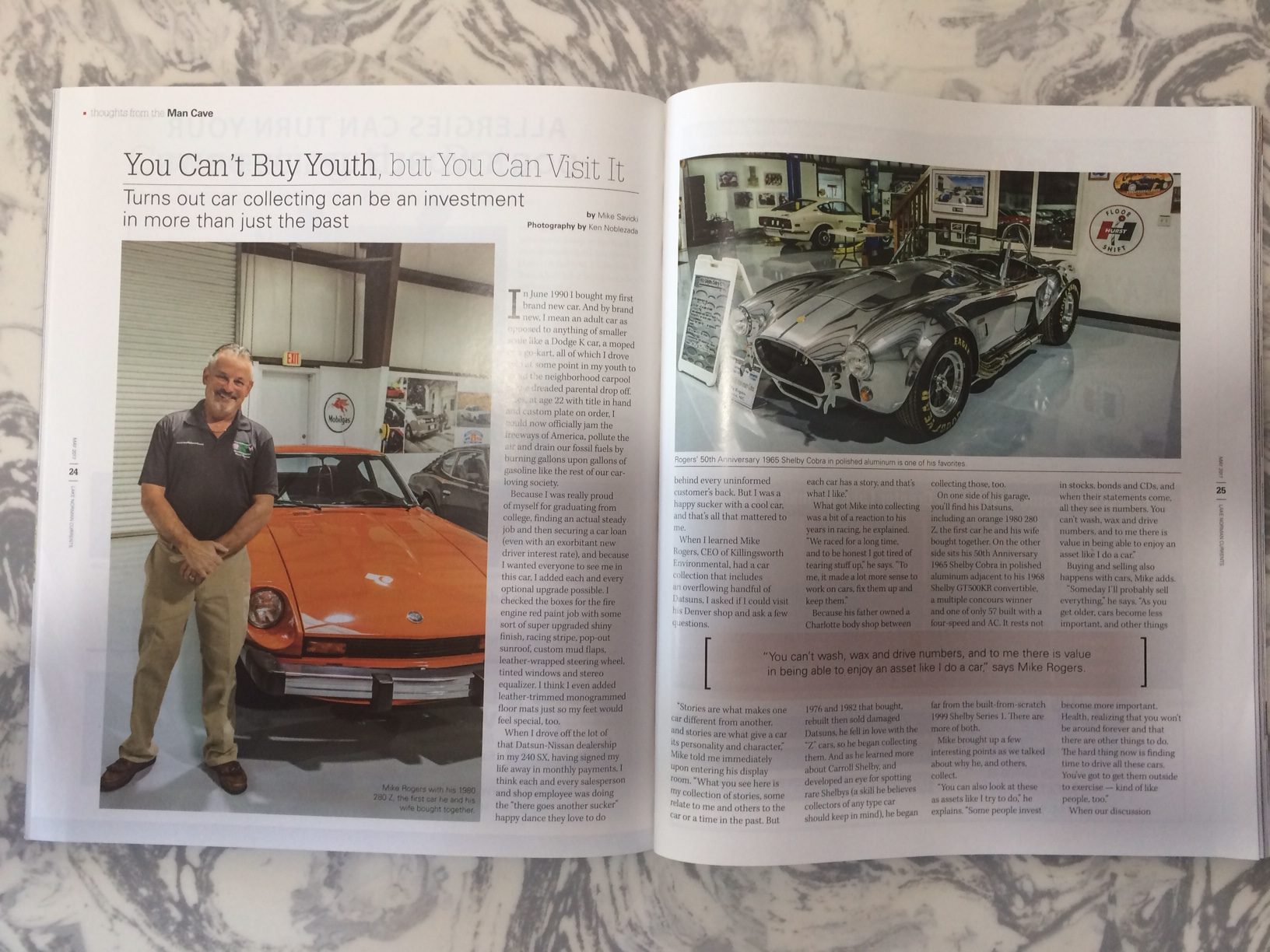You Can’t Buy Youth, but You Can Visit It
This article was originally published in the May 2017 edition of Lake Norman Currents.
Turns out car collecting can be an investment in more than just the past
In June 1990 I bought my first brand new car. And by brand new, I mean an adult car as opposed to anything of smaller scale like a Dodge K car, a moped, or a go-kart, all of which I drove solo at some point in my youth to avoid the neighborhood carpool or the dreaded parental drop off.
Yes, at age 22 with title in hand and custom plate on order, I could now officially jam the freeways of America, pollute the air and drain our fossil fuels by burning gallons upon gallons of gasoline like the rest of our car-loving society.
Because I was really proud of myself for graduating from college, finding an actual steady job and then securing a car loan (even with an exorbitant new driver interest rate), and because I wanted everyone to see me in this car, I added each and every optional upgrade possible. I checked the boxes for the fire engine red paint job with some sort of a super upgraded shiny finish, racing stripe, pop out sunroof, custom mud flaps, leather-wrapped steering wheel, tinted windows, and stereo equalizer. I think I even added leather trimmed monogrammed floor mats just so my feet would feel special, too.
When I drove off the lot of that Datsun-Nissan dealership in my 240 SX having signed my life away in monthly payments, I think each and every salesperson and shop employee was doing the “there goes another sucker” happy dance they love to do behind every uninformed customer’s back. But I was a happy sucker with a cool car and that’s all that mattered to me.
When I learned Mike Rogers, president of Killingsworth Environmental, has a car collection that includes an overflowing handful of Datsun’s, I asked if I could visit his Denver shop and ask a few questions.
“Stories are what makes one car different from another, and stories are what give a car its personality and character,” Mike told me immediately upon entering his display room. “What you see here is my collection of stories, some relate to me and others to the car or a time in the past. But each car has a story and that’s what I like.”
What got Mike into collecting was a bit of a reaction to his years in racing, he explained. “We raced for a long time and to be honest I got tired of tearing stuff up,” he says. “To me, it made a lot more sense to work on cars, fix them up and keep them.”
Because his father owned a Charlotte body shop between 1976 – 1982 that bought, rebuilt then sold damaged Datsuns, he fell in love with the “Z’ cars, so he began collecting them. And as he learned more about Carroll Shelby, and developed an eye for spotting rare Shelby’s (a skill he believes collectors of any type car should keep in mind), he began collecting those, too.
On one side of his garage, you’ll find his Datsuns, including an orange 1980 280 Z, the first car he and his wife bought together. On the other side sits his 50th Anniversary 1965 Shelby Cobra in polished aluminum adjacent to his 1968 Shelby GT500KR convertible, a multiple concours winner and one of only 57 built with a 4-speed and AC. It rests not far from the built-from-scratch 1999 Shelby Series 1. There are more of both.
Mike brought up a few interesting points as we talked about why he, and others, collect.
“You can also look at these as assets like I try to do,” he explains. “Some people invest in stocks, bonds and CD’s, and when their statements come, all they see is numbers. You can’t wash, wax and drive numbers, and to me there is value in being able to enjoy an asset like I do a car.”
Buying and selling also happens with cars, Mike adds.
“Someday I’ll probably sell everything,” he shares. “As you get older, cars become less important and other things become more important. Health, realizing that you won’t be around forever, and that there are other things to do. The hard thing now is finding time to drive all these cars. You’ve got to get them outside to exercise. Kind of like people, too.”
When our discussion turned to cars, guys and youth, I could tell we were both on the same page. Cars remind us of youth. Decades ago, when car manufacturers prided themselves on making their models look unique and different, certain types flocked to cars that looked certain ways.
My red 240 SX looked like a sports car jet crossed with a jet airplane so sliding behind the wheel gave me the sensation of flying. (A speeding ticket or two was proof that once or twice, perhaps, I did try.) Others were drawn to muscle cars, lifted trucks, super sedans or sleek imports. The mantra “to each his own” once ruled the roads more than it does today.
“And what was the first thing a teenage boy did when he got his license and a car?” Mike asks. “He went and picked up his girlfriend.”
Great point. That’s what I did.
But as technology entered cars, not to mention our hands, and car manufacturers moved to centralize and standardize the look and build of most popular models (think Camry, Accord, Corolla, etc.) things changed for guys and cars on the road. They aren’t as important for the reasons they once were, one might argue.
Waving his cell phone, Mike says, “But now, if a teenager wants to see his girlfriend, he turns to this, not his car, to connect. Cars have become generational. There’s really nothing holding him back from a girlfriend even half way around the world.”
Truth be told, as car lovers and car collectors, we are part of a cycle.
“No matter what we own or why we collect, really, we don’t own these cars; we are just caretakers,” says Rogers.
He’s got that right.

